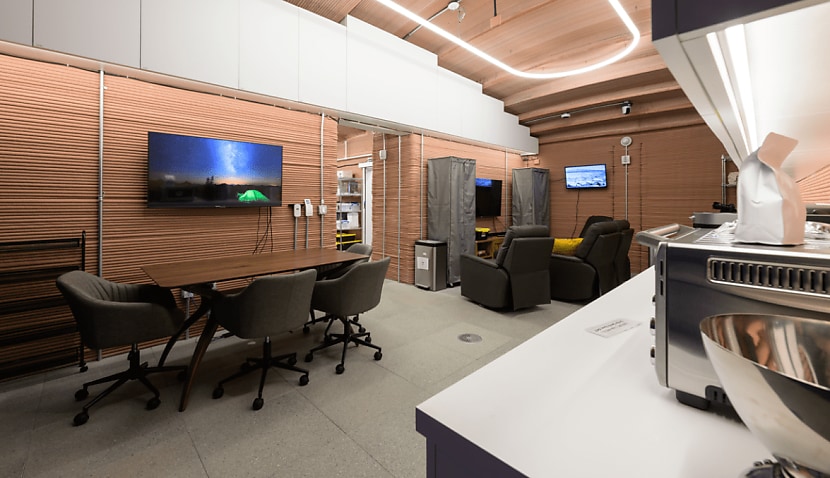
Kelly Haston, Anca Selariu, Ross Brockwell, and Nathan Jones spent 378 days living in the 3D-printed “habitat” known as Mars Dune Alpha at NASA’s Johnson Space Centre in Houston.
The 1,580-square metre space consisted of only limited facilities, such as small bedrooms, a work area and an exercise room, to test how the quartet would cope with the isolation.
Shortly after being released, flight engineer Brockwell said, “I’m very grateful to have had this incredible opportunity to live for a year within the spirit of planetary adventure towards an exciting future.
“I’m grateful for the chance to live the idea that we must utilise resources no faster than they can be replenished and produce waste no faster than they can be processed back into resources.”
The CHAPEA mission – or Crew Health and Performance Exploration Analog – saw the “astronauts” undertake tasks such as “Marswalks”, growing vegetables, and maintaining equipment.
“They’ve been separated from their families, placed on a carefully prescribed meal plan and undergone a lot of observation,” explained Steve Koerner, deputy director of Johnson Space Centre. “Mars is our goal.”
The CHAPEA mission is one of several yearlong “stays” planned by NASA to help it better understand how humans will cope with an extended absence from Earth.
NASA initially plans to return humans to the moon as part of its Artemis missions before creating a lunar base to support a future mission to Mars.
Australia will participate in the plan by sending a rover to the moon to collect lunar regolith, or moon soil, which will eventually be turned into oxygen to support a permanent human base.
Regolith can both become oxygen that humans can breathe or aid the production of rocket fuel necessary to support the launch of a rocket from the moon to Mars and beyond.
Two consortiums, ELO2 and AROSE, are currently competing to provide the Australian Space Agency with the final prototype.
Space Connect understands the space agency will likely pick the winning design later this year, while a blast-off could occur as early as 2026.

Adam Thorn
Adam is a journalist who has worked for more than 40 prestigious media brands in the UK and Australia. Since 2005, his varied career has included stints as a reporter, copy editor, feature writer and editor for publications as diverse as Fleet Street newspaper The Sunday Times, fashion bible Jones, media and marketing website Mumbrella as well as lifestyle magazines such as GQ, Woman’s Weekly, Men’s Health and Loaded. He joined Momentum Media in early 2020 and currently writes for Australian Aviation and World of Aviation.
Receive the latest developments and updates on Australia’s space industry direct to your inbox. Subscribe today to Space Connect here.












